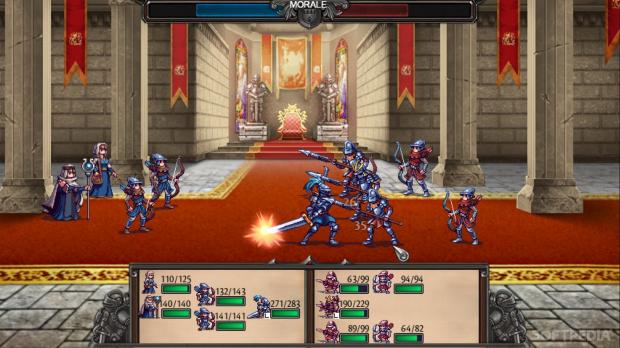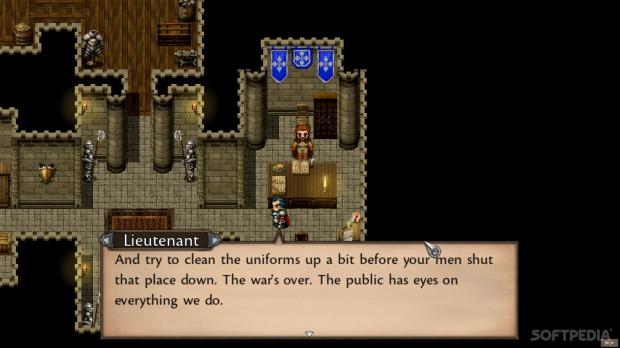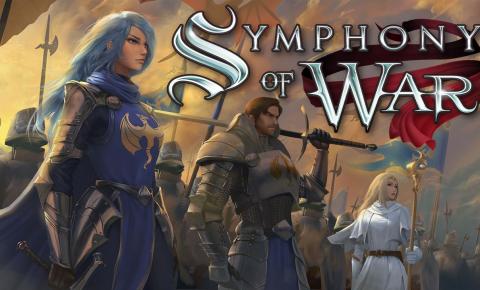

Symphony of War: The Nephilim Saga Review (PC)
source link: https://www.softpedia.com/reviews/games/pc/symphony-of-war-the-nephilim-saga-review-535557.shtml
Go to the source link to view the article. You can view the picture content, updated content and better typesetting reading experience. If the link is broken, please click the button below to view the snapshot at that time.
The Nephilim Saga Review (PC)
My archer heavy force gets mauled by an enemy infantry troop I allowed to move through my line. But my main armored force then makes short work of this enemy squad, opening up the way for allies to capture an enemy castle and move towards the powerful general that I need to take down. I move two other squads only a short distance away, keeping them out of potential battles and allowing them to heal, before thinking about a strategy to deal with the last big enemy formation. Once I finish this stage it will be time to think about the composition of my armies and how I can boost their abilities.
Symphony of War: The Nephilim Saga is developed by Dancing Dragon Games and published by Freedom Games. I played it on the PC using Steam. The game delivers an experience that mixes classic tactics and role-playing elements with a very retro art style.
The story is set in a world called Tahnra, with players taking control of a small group of recent war academy graduates seeking to deal with an internal conflict. And then it escalates in some pretty cool and weird ways. There are prophecies, cackling villains, gods, and massive battles. The narrative seems straightforward but there are twists and turns, mostly centered on the relationships between the characters. The dialogue is filled with tropes and never feels natural and there are a lot of worldbuilding details to take in quickly.

Symphony of War: The Nephilim Saga’s gameplay is built around small squads, turn-based movement, and careful planning. Maps are filled with enemy squads and points of interest. Both forces control a variety of squads, made up of up to nine individual units. When two squads are in range of each other they can engage. The actual battles are automated, so good force mixing, careful movement, and placement are important. A group that does not fight can seize an objective or can heal during a turn. Always think ahead and take into account what enemy squads can do during their own turn. It’s always a good idea to fully heal the squad that will face the toughest battles, even if that means no advance for a turn or two.
When players beat a map they can access a base of operations, where they can tweak their squads, decide who gets artifacts, recruit more forces, and upgrade or customize them. The system has plenty of depth, although the interface for it is a little hard to figure out. The idea is to create the best possible fighting force before tackling the next challenge. There are more than 40 classes to work with and a ton of possibilities for squad synergies. Between missions, the game also features conversations between the main cast, showing the bonds that form and opening up bonuses. Relationships mean good morale and that, in turn, leads to more victories and fewer losses on the field.
Symphony of War: The Nephilim Saga is very enjoyable from a mechanical point of view. I like thinking about the best way to unlock an enemy line of defense, the advantages of going for leaders rather than taking down supporting squads, and how to protect my fragile dedicated archer and healing squad. The game actively encourages players to mix and match units and artifacts to create squads that test the limits of the system and feel overpowered.
I don’t personally love the narrative, but I understand that it delivers what many players expect from the genre and theme. There’s always the option to skip through cutscenes and focus on the tactical puzzle element. Symphony of War: The Nephilim Saga is a weird mix of very familiar design and cuteness. This is a game about armies destroying each other but the leaders and troops all look like nice miniatures to put on a shelf.
The retro pixel art is good, but I sometimes had problems differentiating at a glance between units. The lack of detail also makes it harder to care about the universe and its characters. The sound design is solid, with a soundtrack that fits the theme and mechanics perfectly and some solid combat effects and barks.

The Good
- Interesting combat system
- Squad customization
- Relationship development
The Bad
- Takes some time to introduce all mechanics
- A lot of worldbuilding to absorb
- Some interface issues
Conclusion
Symphony of War: The Nephilim Saga is best enjoyed in bite-sized chunks. Clear a map, prepare for another, watch the conversations between characters, see what a new area has to offer, then save the actual combat for another session. This keeps the gameplay fresh and the narrative interesting.
Review code provided by the publisher.
Recommend
About Joyk
Aggregate valuable and interesting links.
Joyk means Joy of geeK

